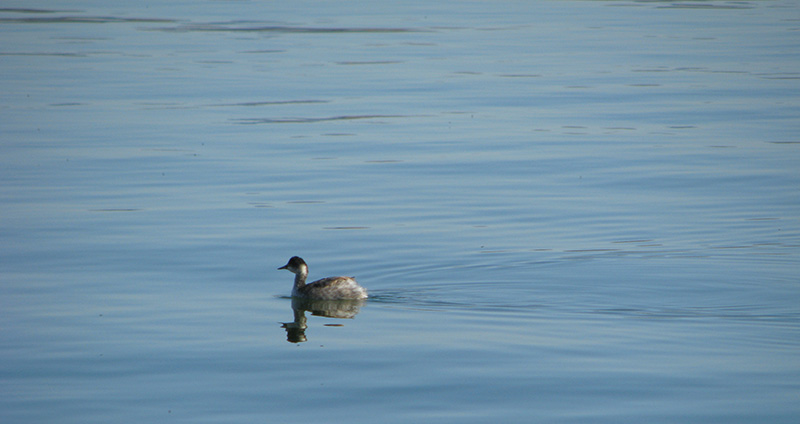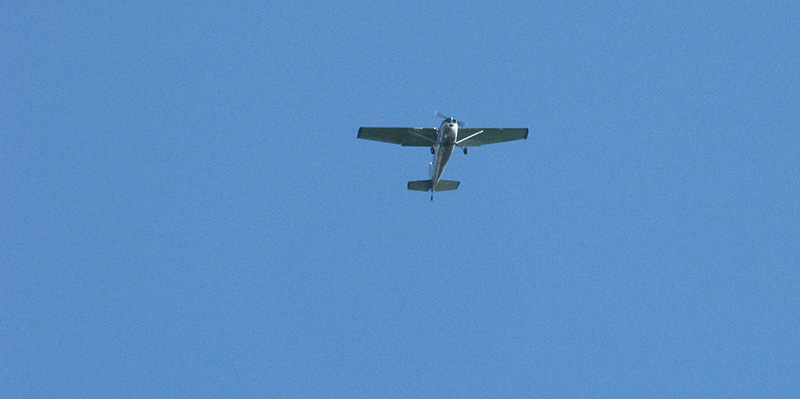
Each fall Mono Lake abounds with Eared Grebes; aquatic birds that utilize the lake as a staging area during their southward migration. While staging on the lake the Eared Grebes undergo a molt of their flight feathers and double their weight by feasting on brine shrimp.

For over a decade Canadian biologist Sean Boyd from the Pacific Wildlife Research Center has been conducting research on the Eared Grebe population of Mono Lake during the bird’s autumn staging period. The Eared Grebe lends itself to this type of research because at the end of their summer breeding season 90% of them migrate to either Mono Lake or Great Salt Lake. It is uncommon for a migrating species to stage in such geographically restricted sites, which makes the Eared Grebe a great candidate for observing population dynamics outside of the breeding season. In the past, as many as two million grebes have been counted on Mono Lake, which is equivalent to 30% of the entire North American population.
Aerial photography of Mono Lake is utilized each year to determine the number of birds on the lake surface, and the Mono Lake Committee has been assisting with this aspect of Boyd’s research since the beginning. Furthering the scientific understanding of Mono Lake and its inhabitants is part of the Mono Lake Committee’s mission, which is why we have been happily involved in Boyd’s work for over a decade. This year five different flights are planned in order to gain a better understanding of Eared Grebe population dynamics. The first of five flights took place on Monday, September 15 with Black Mountain Air pilot Geoff Pope maneuvering a small plane above the lake. While the plane flew transects over the water, volunteer photographer and Outdoor Experiences Manager Santiago Escruceria snapped photographs of the unsuspecting birds below.

Once the photographs have been compiled the birds in each photo will be counted. The resulting numbers will then be analyzed by Boyd, who will use them, along with the current lake area, to extrapolate the entire number of Eared Grebes on Mono Lake during the day of the count. Since Mono Lake provides a staging area for up to 30% of the North American Eared Grebe population, the findings of Boyd’s research will both better our understanding of Mono Lake’s Eared Grebes and the bird species as a whole.

Thank you for the important research on Grebes the committee and researchers are doing.
At last, a justifiable reason for the invasion of those noisy and intrusive gadgets, which otherwise crud up the air for no good reason! love, Jeffrey